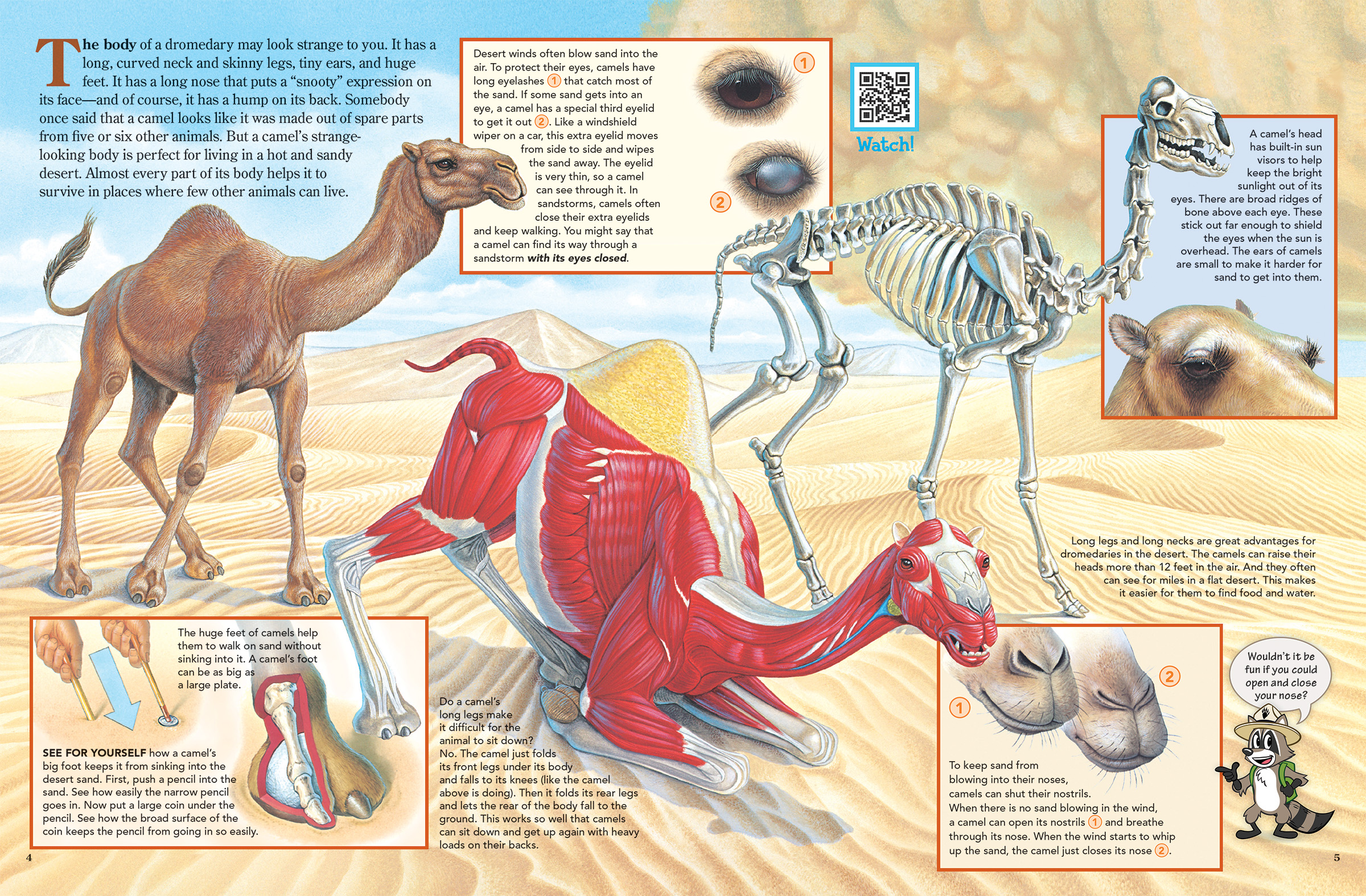
The Body of a Dromedary is a Little Strange Looking
ByThe body of a dromedary may look strange to you. It has a long, curved neck and skinny legs, tiny ears, and huge feet. It has a long nose that puts a “snooty” expression on its face—and of course, it has a hump on its back. Somebody once said that a camel looks like it was made out of spare parts from five or six other animals. But a camel’s strange-looking body is perfect for living in a hot and sandy desert. Almost every part of its body helps it to survive in places where few other animals can live.
Desert winds often blow sand into the air. To protect their eyes, camels have long eyelashes 1 that catch most of the sand. If some sand gets into an eye, a camel has a special third eyelid to get it out 2. Like a windshield wiper on a car, this extra eyelid moves from side to side and wipes the sand away. The eyelid is very thin, so a camel can see through it. In sandstorms, camels often close their extra eyelids and keep walking. You might say that a camel can find its way through a sandstorm with its eyes closed.
The huge feet of camels help them to walk on sand without sinking into it. A camel’s foot can be as big as a large plate.
SEE FOR YOURSELF how a camel’s big foot keeps it from sinking into the desert sand. First, push a pencil into the sand. See how easily the narrow pencil goes in. Now put a large coin under the pencil. See how the broad surface of the coin keeps the pencil from going in so easily.
Do a camel’s long legs make it difficult for the animal to sit down? No. The camel just folds its front legs under its body and falls to its knees (like the camel above is doing). Then it folds its rear legs and lets the rear of the body fall to the ground. This works so well that camels can sit down and get up again with heavy loads on their backs.
A camel’s head has built-in sun visors to help keep the bright sunlight out of its eyes. There are broad ridges of bone above each eye. These stick out far enough to shield the eyes when the sun is overhead. The ears of camels are small to make it harder for sand to get into them.
Long legs and long necks are great advantages for dromedaries in the desert. The camels can raise their heads more than 12 feet in the air. And they often can see for miles in a flat desert. This makes it easier for them to find food and water.
 To keep sand from blowing into their noses, camels can shut their nostrils. When there is no sand blowing in the wind, a camel can open its nostrils 1 and breathe through its nose. When the wind starts to whip up the sand, the camel just closes its nose 2. Wouldn’t it be fun if you could open and close your nose?
To keep sand from blowing into their noses, camels can shut their nostrils. When there is no sand blowing in the wind, a camel can open its nostrils 1 and breathe through its nose. When the wind starts to whip up the sand, the camel just closes its nose 2. Wouldn’t it be fun if you could open and close your nose?

